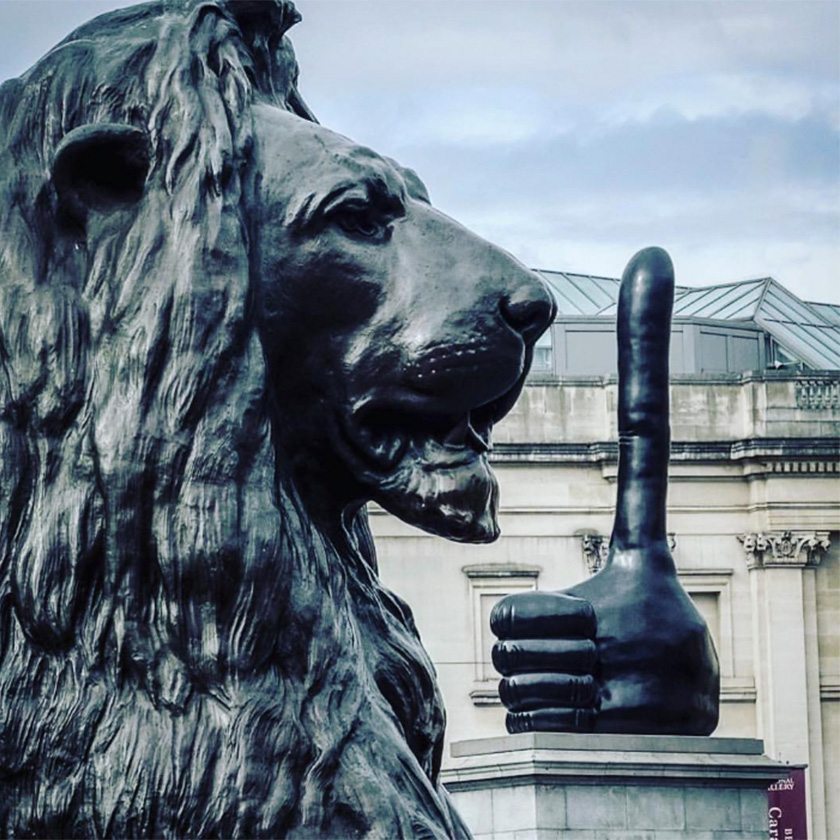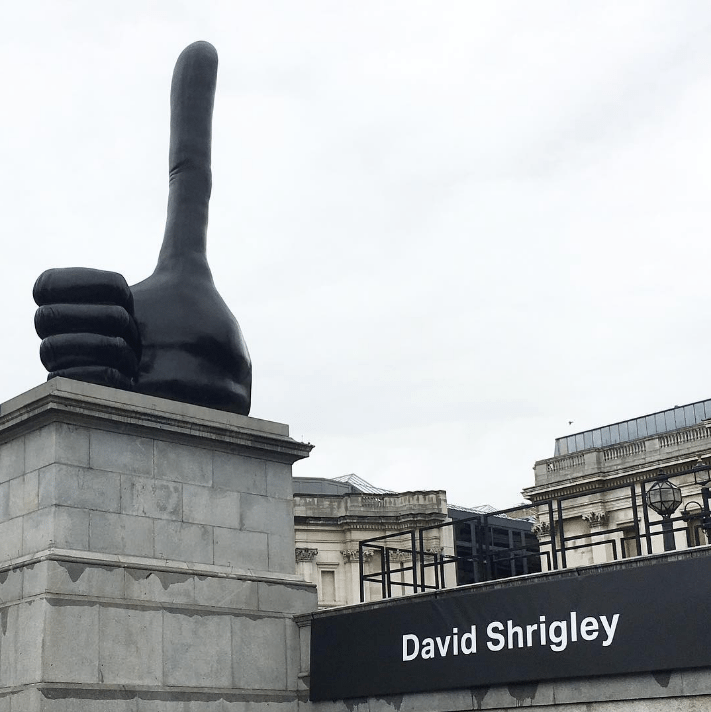While many have applauded the ‘thumbs up’ sculpture as depicting a charming and positive message, others have branded it ugly and phallic. We liked the big blue cock of 2013.
The Fourth Plinth: Who is David Shrigley?
Philippa May looks at the artist behind the Really Good artwork currently atop the Fourth Plinth.
This post may contain affiliate links. Learn more
David Shrigley’s giant thumbs up is the 11th artwork to sit on Trafalgar Square’s Fourth Plinth.
The changing artworks on the Fourth Plinth year after year have been a source of delight, discussion and debate we take a look at why.
Wick and Tallow Instagram
David Shrigley’s 7m-high sculpture of a hand giving a thumbs up sign, which the artist hopes will become a self-fulfilling prophecy of positivity, has been cast in bronze with the same dark patina as the other statues in Trafalgar Square.
The Fourth Plinth Programme invites world-class artists to make new work to be displayed sparking cultural discussion and Mr Shrigley said it was a “real privilege” to make the work.
“It’s a work about making the world a better place… which obviously is a ridiculous proposition, but I think it’s a good proposition,” he said.
The Mayor of London, Sadiq Khan, said the “positivity and humour” in Really Good “truly encapsulated the spirit of London”.
So who is behind the latest plinth artwork?
Shrigley was born in 1968 in Macclesfield but now lives and works in Brighton, his work focuses on creating drawings, animations and sculptures that reflect the absurdity of contemporary society.
He has also had solo exhibitions at Auckland Arts Festival, New Zealand, Hayward Gallery in London and the Yerba Beuna Centre for the Arts in San Francisco and in 2013 he was nominated for the Turner Prize. This year Shrigley also created an illustration for the #londonisopen campaign.
5 facts about the Fourth Plinth
1. Really Good replaces Gift Horseby German artist Hans Haacke, a skeletal sculpture that displayed a live feed from the London Stock Exchange.
2. Mark Wallinger’s figure Ecce Homo was the first piece to stand on the empty plinth – in the north-west corner of the square – in 1999.
3. Other works have included Alison Lapper Pregnant by Marc Quinn (2005), Nelson’s Ship in a Bottle by Yinka Shonibare (2010) and Elmgreen and Dragset’s Powerless Structures, Fig 101 – a sculpture of a boy astride his rocking horse.
4. During Antony Gormley’s One & Other stint, in which 2,400 members of the public occupied the fourth plinth for an hour each for 100 days, one young graduate used the opportunity to display himself and his 10 foot CV in order to bag himself a job – and he was successful!
5. Trafalgar Square has a plinth on each of its four corners. Three of them have sculptures of decorated military officers: Henry Havelock, Charles James Napier, and King George IV. The Fourth Plinth, built in 1841, remained unused for more than 150 years.


